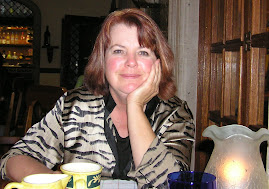My apologies to the gray-haired women who scurried away when they noticed my intense stares. I’m not weird, I was just checking out your hair. Now, that’s some nice gray—I could do that. Or: OMG, she looks older than the pyramids. And: What’s that? Icing on top of her head?
Some of those gray heads wore the ever-popular but fashionably exhausted 1980’s wedge , while others can’t let go of that gray poodle-do. I think it was the cuts that scared me more than the color. They just looked old.
Sure, I’ll be collecting Social Security soon, but when I signed on the bottom line I did not agree to old. Mature, maybe, but definitely not old. And that’s where this hair color business comes into my life.
The top of my head could sing, “I’ve been everywhere man…” It was a lovely chestnut. Silver slipped in, I didn’t lose that 50 pounds for a family reunion, so my hair dresser said, “Let’s color it. How about blonde?” Who knew I could find so many levels of blonde for the next few years? And then when spouse woke up to my red hair one morning, he screamed fearing he did a no-no. (I didn’t warn him on a pending color change.)
When the big six-oh dear! struck, I was done with roots. Blessed with healthy hair that grows quickly, my $150 a month auburn locks grew a silver strip in less than two weeks. So I committed to reality. “Cut it off,” I commandeered my hair dresser. “I’m going to let it grow out.” He shrugged, clipped and cut, knowing full well that I’m hopelessly vain and that I’d back out of this going natural phase.
And I did. The first photo I saw of me with gray roots spreading like quicksilver over my head, I screamed, fearing I did a no-no—looking my age.
This is when the staring at women with gray hair began. I called it “studying natural color,” assuming gray is color.
“Okay, I can do this,” I whispered in total acceptance of my age.
A new hairdresser suggested weaves that blended in the silver with whatever other colors lurk on my skull. Saturday I went in for a “very light touch-up” after letting three-months worth of silver take over.
I’m happy with my mature look—but not so confident.
So, I took advantage of Vibrant Nation’s new beauty guide, “Great Hair After 50.”
I learned a few things, like when I saw that ancient old crone holding her granddaughter, that if I had added “A peachy pink or golden pink blush,” that the makeup would’ve warmed up my face. It explained that my skin “may now be lighter more sallow, pinky in spots, or ashy. You may have brown spots, rosacea, or darker under-eye circles…” Uh. Yeah. All of the above. New peach blush is in my immediate future.
The guide tackles every kind of hair issue for women of a certain age. I’m blessed with healthy hair, but I’ve been a Vitamin B devotee since my twenties. It might have done its job, or I harbor good genes. But with those genes came the eye brow nightmare, I thought.
Since when are dark, thick, curled hairs supposed to show up on my eye brows? I pluck those bad boys immediately, leaving bare spots where white hairs, much like my cat’s whiskers grow. NIGHTMARE!
Apparently, I share this nightmare because the Vibrant Nation guide addresses this! Plus I can click on the recommended product and have it shipped to my door. (Ah, the joy of virtual books!)
What color is my hair? Gray with chestnut, light brown, slightly auburn tints that I’ve let grow long in a slightly layered cut with bangs. Got hot flash? Pull hair up into a scrunchy. Got date? Puff up the bangs and wrap hair into a huge clip. Wear long ear rings. Got exercise? Baseball cap with pony tail. Got roots? Nope! I’m no longer a slave to roots.
The Annual New Mexico Christmas Debate
-
Call this Christmas Eve tradition what you will, the purpose of the
path-lined faralitos/luminarias is to light the way for the Holy Family.
The faralitos ...
3 years ago















